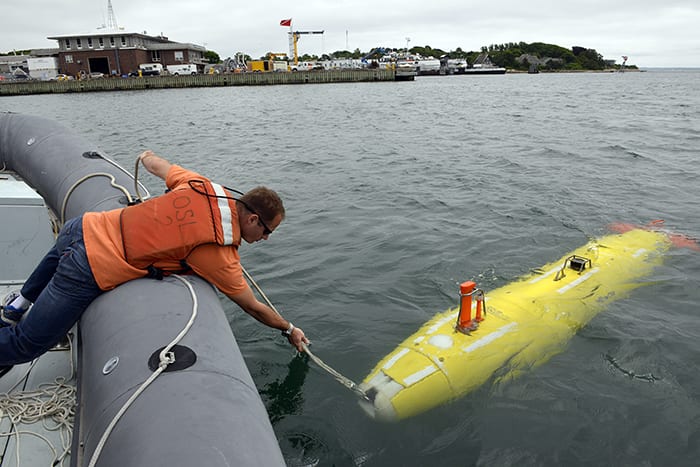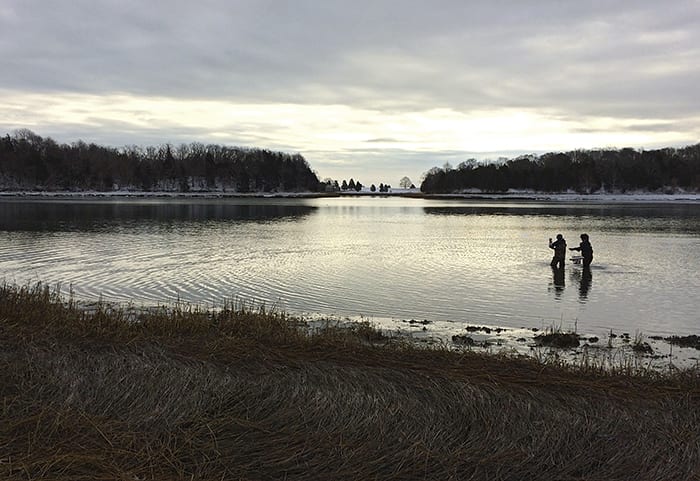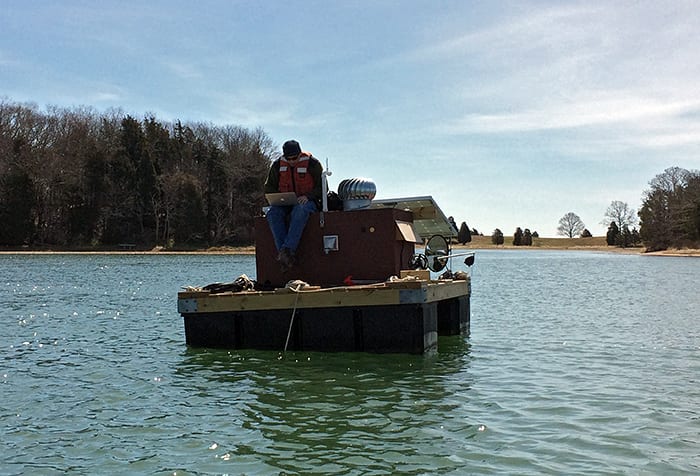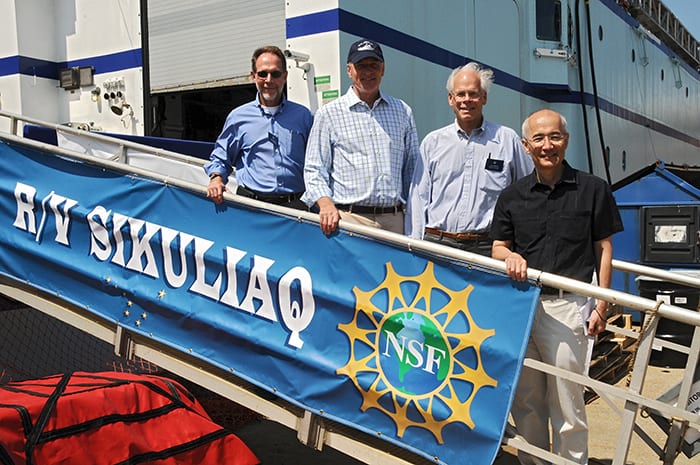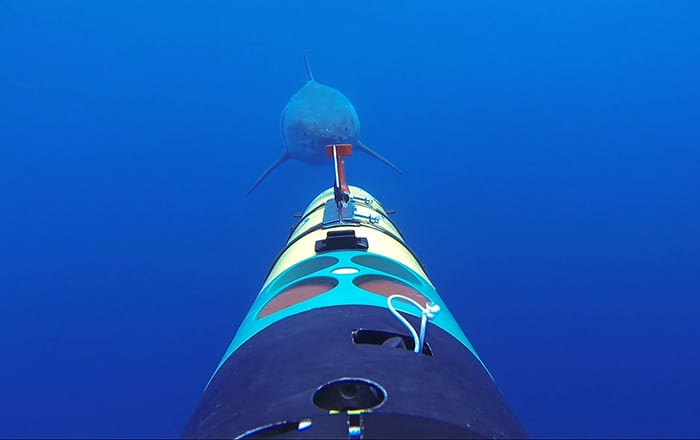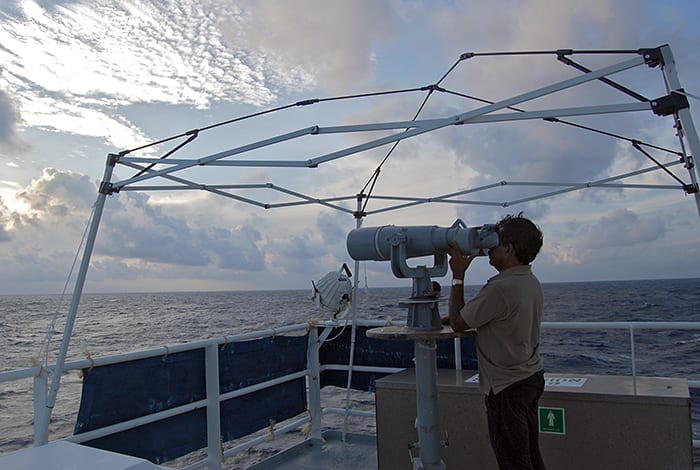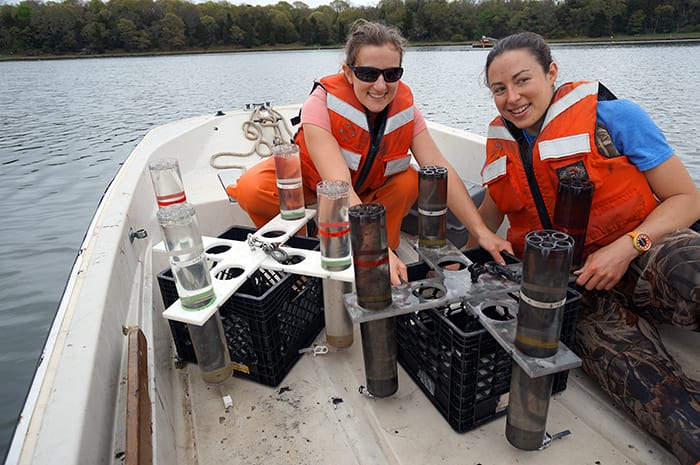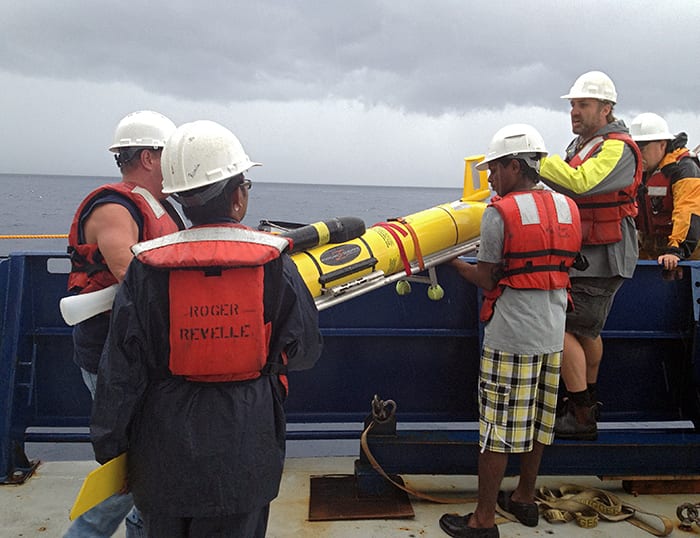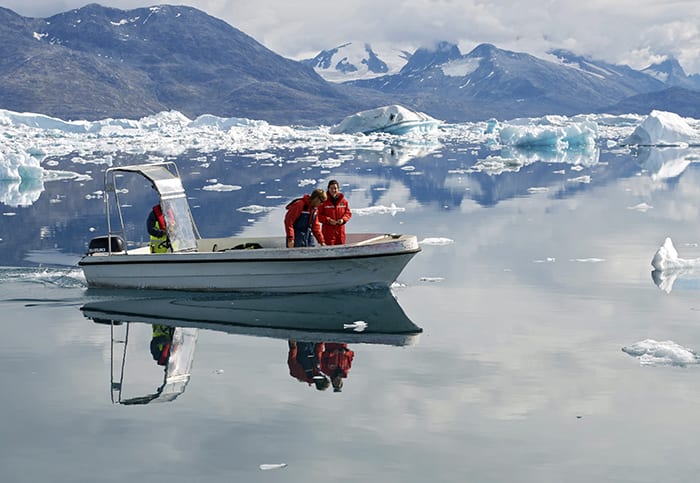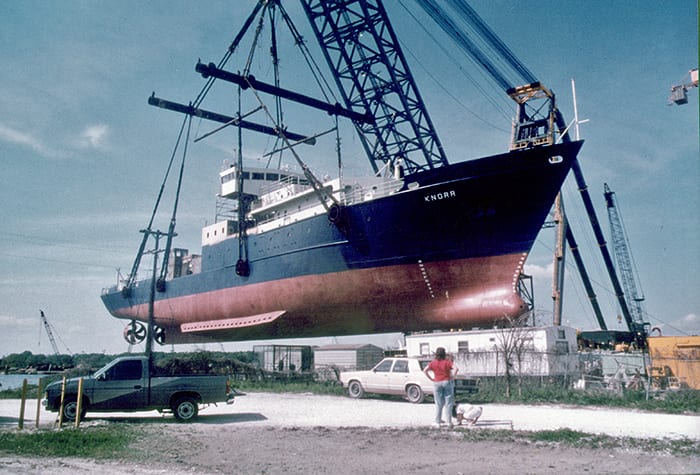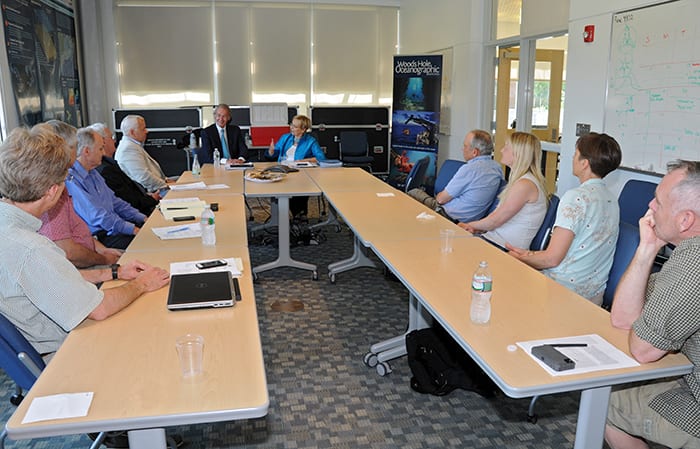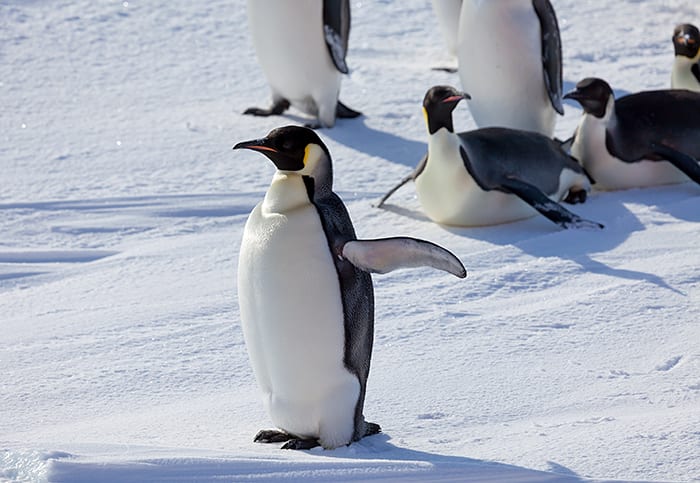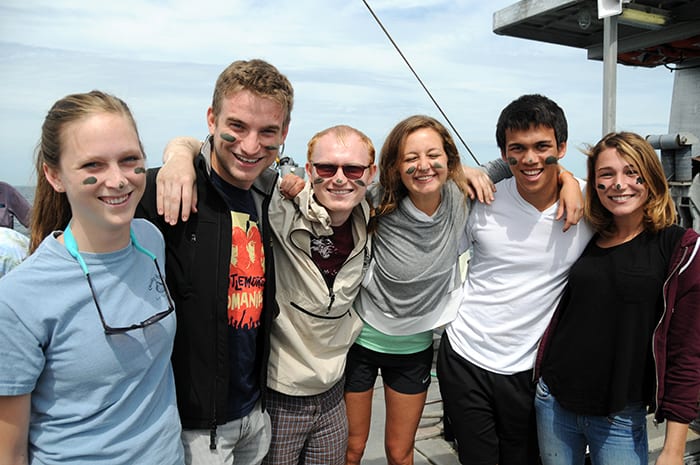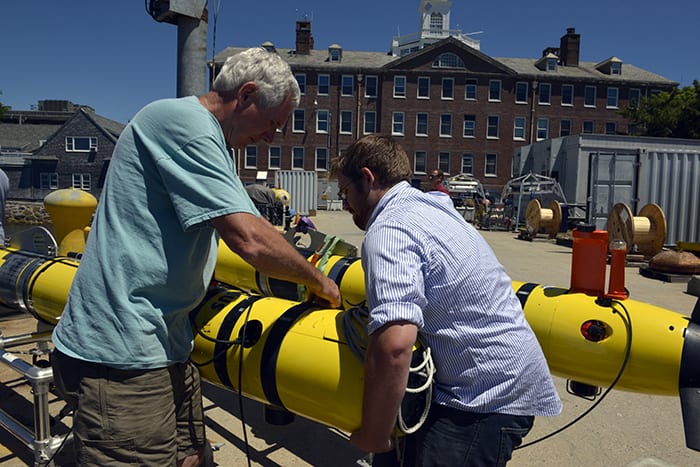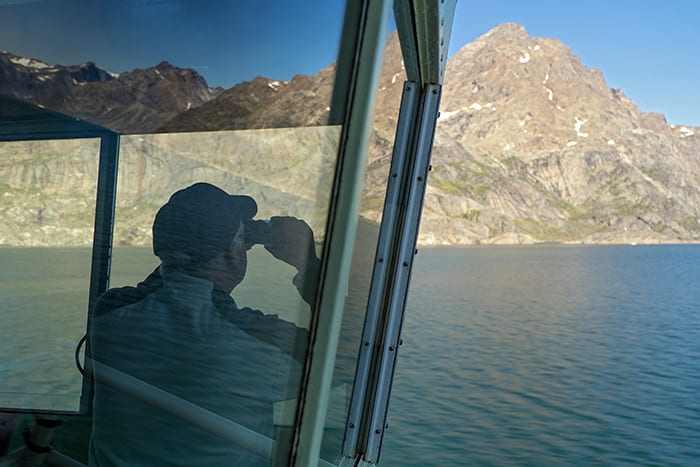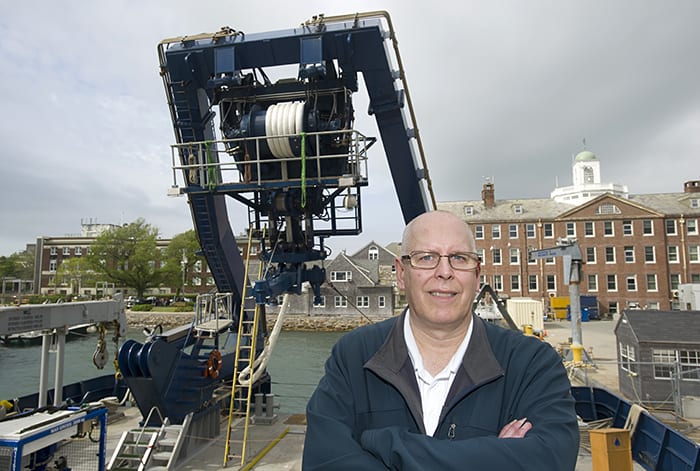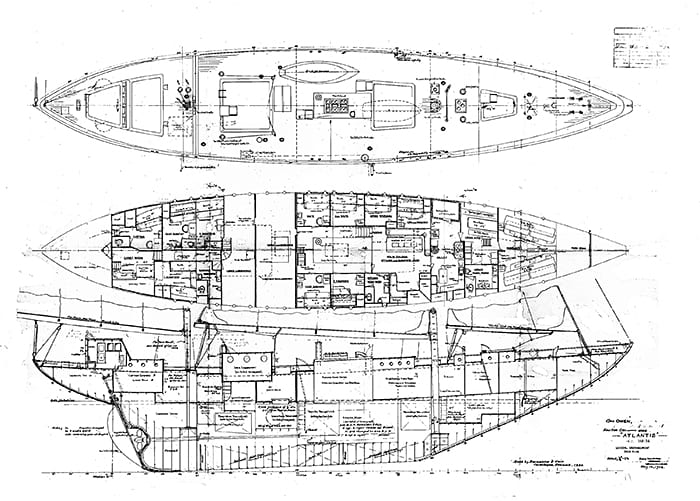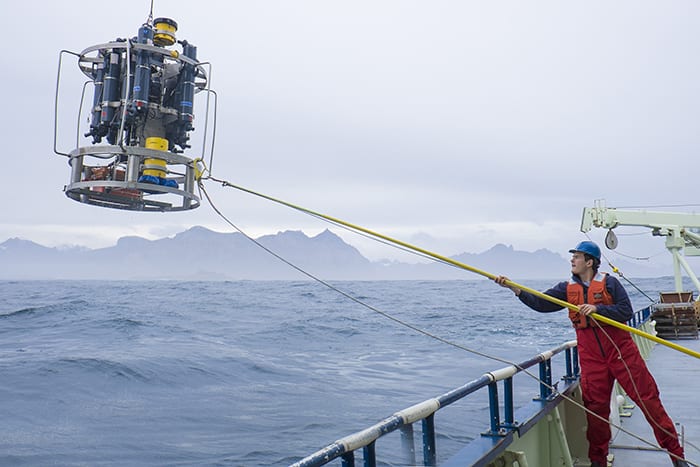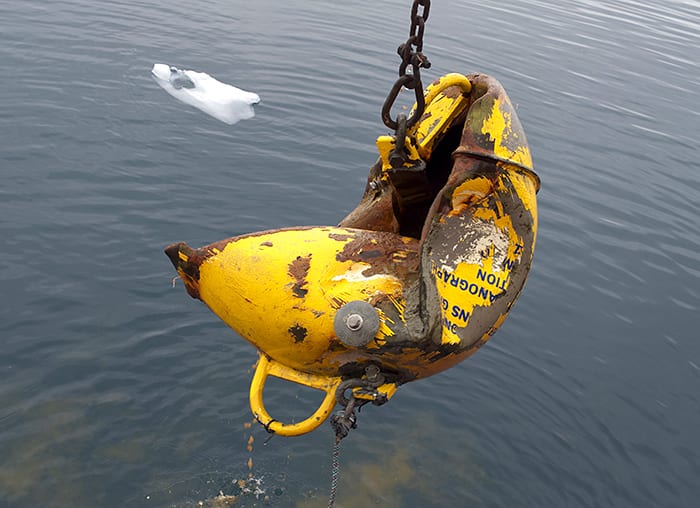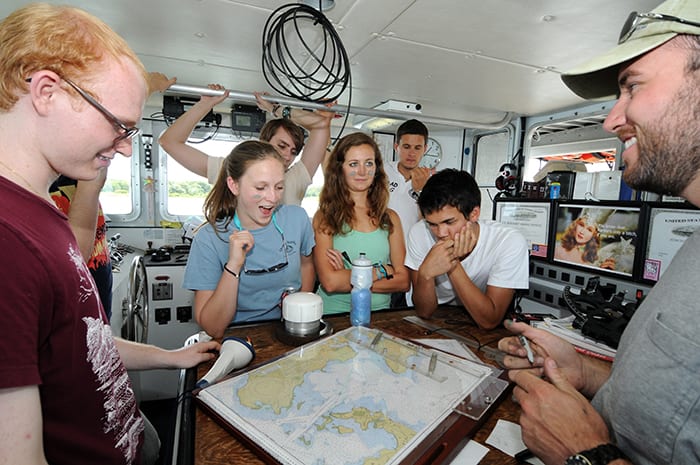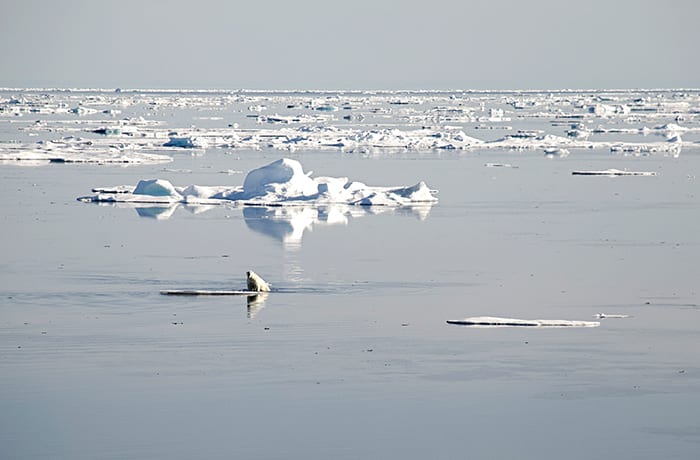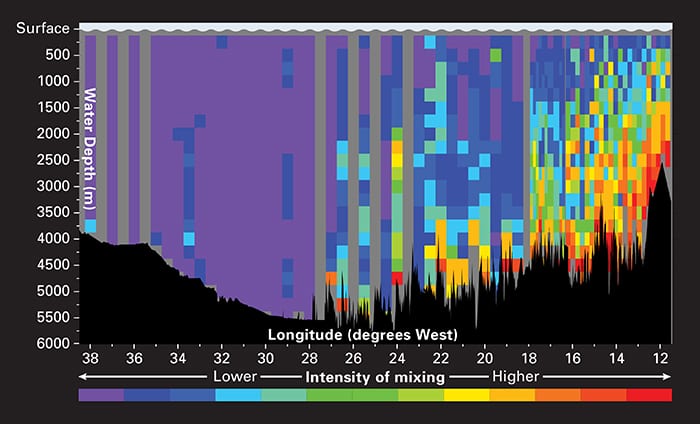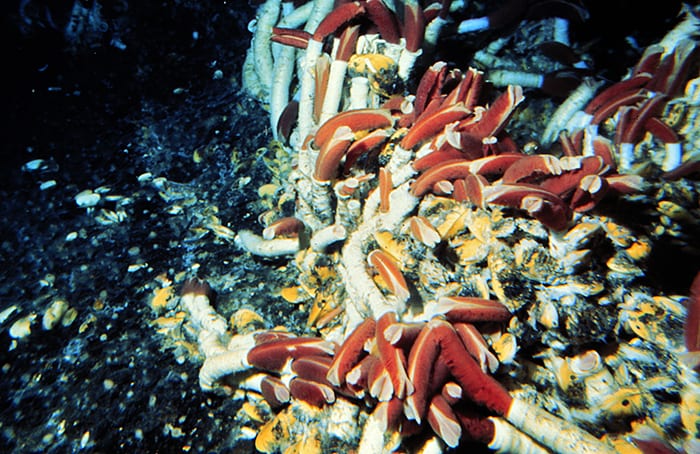Multimedia Items
New Dimensions
WHOI senior engineer Lee Frey of the Oceanographic Systems Laboratory helps test a new multibeam sensor mounted to the underside of an autonomous underwater vehicle (AUV) that can scan and…
Read MoreThe Big (Winter) Chill
MIT-WHOI Joint Program students Alexis Fischer and Isabela Le Bras braved the January cold to conduct sediment cores in search of the plankton Alexandrium fundyense at Nauset Marsh in Orleans,…
Read MoreWatery Wi-fi
Post-doctoral investigator Mike Brosnahan worked from a raft that supported an Imaging FlowCytobot (IFCB) on a frigid March day in Nauset Marsh in Orleans, Mass. The IFCB continuously records microscope…
Read MoreSpecial Visit
It’s not every day that a new ice-strengthened ship visits Woods Hole. In August, R/V Sikuliaq, a ship capable of breaking ice up to 2.5 feet thick, spent several weeks at WHOI before…
Read MoreLook Behind You
A REMUS 100 autonomous underwater vehicle picked up an unexpected follower during a 2013 expedition near Guadalupe Island off the northwest coast of Mexico. The vehicle was equipped with a…
Read MoreThe Exosuit at a Glance
Illustration courtesy of Nuytco Research Interactive by Eric S. Taylor, Woods Hole Oceanographic Institution
Read MoreSharp Lookout
Bright sun and shadows from clouds and choppy waves can make spotting marine mammals difficult on a research ship at sea. Here, Dr. Ajith Kumar, of the National Centre for Biological…
Read MoreCatching Fallen Plankton
MIT-WHOI Joint Program students Alice Alpert and Alexis Fischer retrieved sediment traps recently from Nauset Marsh in Orleans, Mass. Fischer, a biology student, is studying harmful algal blooms produced annually…
Read MoreField Lesson
WHOI Engineering Assistant Sean Whelan (second from the right), shows scientists from India and Sri Lanka how to deploy a Slocum Glider while on a cruise in the Bay of Bengal…
Read MoreFording the Fjord
Maneuvering amid ice ranging from chunks to icebergs, MIT-WHOI graduate student Rebecca Jackson and Dave Sutherland of the University of Oregon conduct operations in the Sermilik Fjord on the east…
Read MoreMany More Miles
A spectator watched as R/V Knorr gots a lift from a massive crane while in dry dock in Amelie, Louisiana, in 1989. The then-20-year-old research ship was at McDermott Shipyard…
Read MoreAround the Table
Climate change was the talk of the day for U.S. Senator Edward Markey, D-Mass., (head of the table on the left) during a visit to WHOI in July. Markey heard…
Read MoreGoing My Way?
An Emperor penguin stretches its wing to rid it of snow after standing up. Emperors travel long distances on ice by “swimming” on their bellies. WHOI biologist Stephanie Jenouvrier recently…
Read MoreTime-out for Fun
A group of this year’s Summer Student Fellows posed for a photo during a day trip in Buzzards Bay on R/V Tioga. The students, sporting sediment taken from a grab sampler,…
Read MorePreparing to Launch
Ben Allen and Carl Fiester, engineers with the Oceanographc Systems Lab, prepare a REMUS 600 for testing from the WHOI dock. These vehicles are part of the Remote Environmental Monitoring…
Read MoreClose Passage
WHOI mooring technician John Kemp surveys the shoreline of Greenland as R/V Knorr transited through Prince Christian Sound at the extreme southern end of the island. The sound is 60…
Read MoreLabors of Love
WHOI’s Employee Recognition Day earlier in the summer acknowledged the labors of several individuals and groups who have made a difference to the Institution over the past year. Al Suchy,…
Read MoreSailing for Science
These are the deck plans for WHOI’s first research ship, Atlantis, which arrived in Woods Hole ready for science on August 31, 1931. The 142-foot-long ketch was built in Copenhagen,…
Read MoreEyes in the Deep
Duke University graduate student Nick Foukal recovers a conductivity temperature depth (CTD) rosette during a recent cruise on R/V Knorr in the North Atlantic. During the trip, a team led…
Read MoreImplosion!
To investigate the flow of meltwater from glaciers into the ocean, a research team led by WHOI oceanographer Fiamma Straneo installed a mooring in the Sermilik Fjord in Greenland. The…
Read MoreCharting a Course
Summer Student Fellows (front row, left to right) William Shinevar (Brown University), Lily Helfrich (Northwestern University), Maya Becker (Columbia University), Jacob Forsyth (Bowdoin College), (back row, left to right) Karter…
Read MoreAdrift
A polar bear pulls itself onto a small floe to rest between seal-hunting forays. The volume of sea ice in the Arctic has declined sharply in recent decades, with grave…
Read MoreAll Mixed Up
Deep waters don’t run still, they are moved by currents, turbulence, and “internal waves” that cannot be seen at the surface. In a landmark experiment in the mid-1990s, WHOI scientists…
Read MoreLife in an Earthquake Zone
Deep-sea hydrothermal vent sites host dense communities of animals in a food web built on chemical energy from beneath the seafloor. These sites experience frequent disturbances, like volcanic eruptions, that…
Read More
